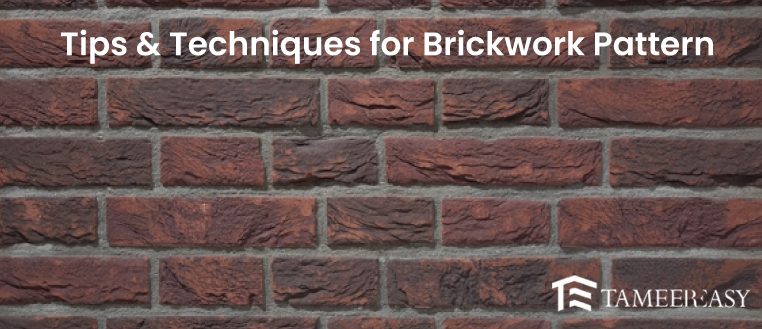Brickwork has long been preferred for building and design due to its ageless charm and robustness. Any building project can benefit from the rich patterns, textures, and touches of elegance and character that various brick configurations can produce.
The proper brickwork pattern must be chosen whether you’re starting a new building project or considering refurbishment to achieve the necessary aesthetic and structural integrity. The top 10 suggestions and methods to think about while choosing brickwork and brickwork patterns will be covered in this post.
Top Ten Tips and Techniques for Selecting Brickwork and Brickwork Patterns
1). Architectural Style
Take into account the architectural design of your building or area. Different brickwork patterns, such as English bonds for historical designs or stack bonds for a modern, clean aesthetic, are frequently connected with particular architectural styles. Ensure the chosen pattern blends with the building’s general design and personality.
2). Structural Requirements
Consider your project’s structural needs. Some patterns’ stability and load-bearing capacity, such as Flemish or English garden wall bonds, are better. To choose the best pattern for your construction, consult a structural engineer.
3). Scale and proportion
Take into account the building’s size and proportion. Smaller bricks with tiny joints can give the impression of being more delicate and detailed than larger bricks with wide mortar joints. Pick a design whose scale and proportions work well together.
4). Desired Aesthetic
The aesthetic you hope to attain should be determined. Diverse brickwork patterns can produce diverse visual effects. While basketweave patterns can produce a textured and warm appearance, herringbone patterns can lend a sense of movement. Investigate many possibilities to find the design that fits your intended aesthetic.
5). Colour and Texture
Pay close attention to the bricks’ colour and texture. The surface features and natural colour can greatly impact how something looks and feels. Try various brick types, coatings, and colours to find the best mix that complements the chosen pattern.
6). Surrounding Materials
Think about the materials paired with the brickwork. The brick design should blend with the surrounding glass, wood, or metal materials. Choosing a pattern that goes well with the surrounding materials ensures the composition is unified and appealing to the eye.
7). Maintenance and Longevity
Analyse the chosen brickwork pattern’s durability and upkeep requirements. Due to their complexity or susceptibility to weathering, some patterns could need additional maintenance. Choose a design that fits your maintenance preferences and skills while considering the implications for long-term maintenance.
8). Environmental Considerations
Consider environmental aspects like location and climate. Some brickwork patterns may function better in some climates or for better insulation. To make an informed choice, consider various patterns of energy efficiency and environmental impact.
9). Cost and Availability
Take into account the pattern’s complexity, the cost and the accessibility of the bricks. Some patterns could cost more because they require expensive materials or specialised brickwork. To ensure viability and affordability, assess the budget and material availability.
10). Seek Professional Advice
For professional advice, speak with architects, designers, or brickwork experts. They have the expertise to guide you through choosing and ensuring the design matches your vision and meets technical specifications.
Conclusion
Choosing the appropriate patterns of brickwork is critical in completing a successful and aesthetically pleasing building or restoration project. You can make an informed choice by considering the architectural style, structural needs, scale, proportion, aesthetics, colours, textures, surrounding materials, maintenance, environmental issues, pricing, and professional guidance.
A carefully chosen brickwork pattern will improve the building’s appearance and personality and guarantee its strength and lifespan for many years.








